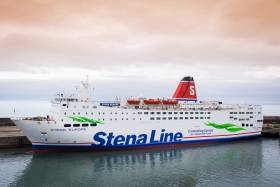Displaying items by tag: Revised Timetable
Due to ongoing problems in Douglas Harbour, the Isle of Man Steam Packet's sailing timetables for its ferry services have been revised.
The fast-craft Manannan will run two daytime sailings (today, 31 March) instead of the ro-pax Ben-my-Chree, departing at 9:30am for Heysham, and returning at 2:15pm.
According to Manx Radio, this will continue for the next three days (incl. Easter Saturday, 3rd April).
Ferry company boss Mark Woodward says the adjustments have been made to avoid on confusion in the coming days.
All passengers who're affected by the changes are asked to contact the Steam Packet Reservations Team on 661661.
A full list of the changes can be consulted through the Steam-Packet's website here, where the operator also outlines the combined reasons for problems in the harbour.
Stena Revise Timetable to Refresh Rosslare-Fishguard Route
#Timetable - A revised timetable of Stena Line's Rosslare – Fishguard ferry service will see customers have a choice of three-day time sailings and one extended overnight crossing from 22nd May.
Following the evaluation of extensive customer research and feedback, Stena Line reviewed the existing schedule and has decided to introduce three, more customer friendly 3 hour 15-minute day time crossings, making Rosslare – Fishguard the shortest and fastest crossing between Ireland and South Wales.
From Monday 22nd May, Stena Line will operate the following revised sailing schedule between Rosslare and Fishguard:
Departure Arrival Crossing Time
Rosslare 08:00 11:15 3hr15
Fishguard 13:10 16:25 3hr15
Rosslare 18:10 21:25 3hr15
Fishguard 23:45 04:00 4hr15*
Ian Davies, Stena Line’s Trade Director, Irish Sea South commented: “The new timetable will reduce the crossing times on some of our sailings by 15 mins and provide a greater choice of convenient sailing times and better arrival times. The recent investment in the Stena Europe ship has further enhanced our service offering for 2017, providing new opportunities which currently do not exist in the market for our travel and freight customers.”
Ian added: “We have conducted a lot of research and spoken with many of our freight and travel customers, listening to what they had to say about our current sailing timetable and ways in which we might improve the service in the future. We believe we have now addressed the points raised and our staff are constantly engaging with customers to ensure a smooth transition. In fact, we have already received positive feedback and believe that the vast majority of our customers will welcome these changes.”
*Overnight sailing time will increase by 15 minutes giving customers a little more time to rest particularly drivers before they disembark.
























